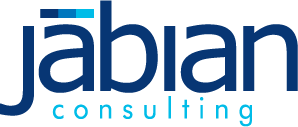ROIC vs Growth
ROIC is a significant indicator in determining growth. A rule of thumb: When the cost of capital is less than ROIC, the company is profitable. If the cost of capital is more than the ROIC, the company is not increasing in value. If a company has a high ROIC, focusing on growth will increase the value exponentially versus when ROIC is low.
Growth should not be top of mind in increasing importance; it only grows in ROIC. Tangible proof is needed to identify where the increase in cash flow is relative to the value created—understanding when to focus on growth and when to focus on return on invested capital is critical.
Where Should We Focus?
Portfolio momentum is the organic revenue enterprises enjoy because of overall expansion in the market segments represented in their portfolio. In contrast, market share performance is the organic growth a company earns by gaining or losing a share in any particular market.
M&A represents the inorganic growth a company achieves when it buys or sells revenue through acquisitions or divestments. The low ROIC in a fast-growing market could create more value because there are measures to gain better ROIC through operational efficiencies. The company can enjoy better ROIC and growth in the market, accelerating revenue growth. This scenario allows the company to focus on development.
Growth through bolt-on acquisitions could create value if the premium paid for the target is not too high. Incremental purchases to fill in gaps and pain points can add growth and utilizing existing distribution channels to market new products could save on additional investment capital. Bolt acquisitions offer less complexity than more significant acquisitions that require a more considerable premium and cumbersome culture shocks to a company. Growth by general market expansion comes at the expense of companies in other industries. This category victim is least likely to retaliate, making product market growth the driver alleged to create the most value.
Why Buy?
Below are some reasons to acquire:
- Synergies – might be able to add economic value through the acquisition
- Economies of scale – savings from producing goods in high volume
- Economies of scope -savings from combining the marketing and distribution of related products
- Vertical Integration – the principal benefit is coordination. Merging two companies in the same industry that make the same products required at different stages of the production cycle
- Expertise – talent pool at an already functioning unit
- Monopoly gains – antitrust laws
- Efficiency gains – elimination of duplication, improvement in poor management
- Tax savings from operational losses – can’t write off losses without gains somewhere else. Profits can offset losses in one division in another.
Cycles
Sustaining growth is difficult because most products have natural life cycles. The S-curve shows the inception, rapid growth, and maturity of products. Companies can use the S-curve to see all products sell slowly at some point once they have gained maximum penetration. ROIC depends on a company’s ability to be operational and efficient within the enterprises themselves. Managers are responsible for allocating capital and strategy execution to ensure the ROIC is more than the cost of capital.
Basic adequacy in research and development, long-term view in planning, and awareness of operating culture trends help ensure companies are making the right decisions internally or simply things in their control.
Back To the Basics
When coming up with proper valuations of companies, it is always essential to go back to the core indicators. Does the business have an ROIC higher than its debt service? How much value is the company generating per dollar? Are we leveraging financial engineering to the point where the company’s numbers are not reflecting its actual value? Do the homework and understand what is all at play and what matters.
